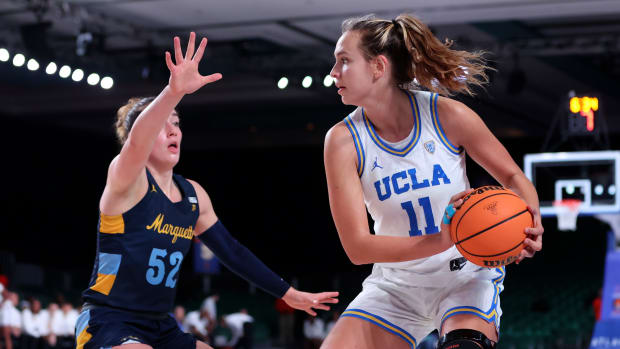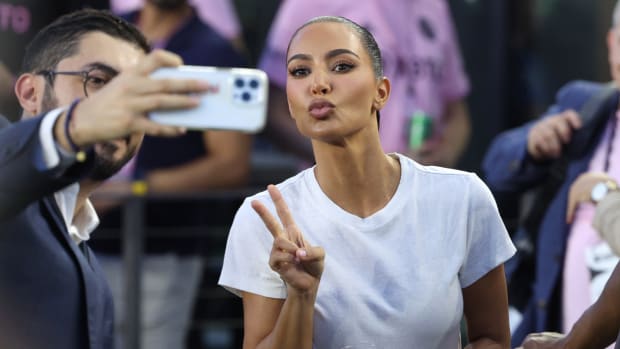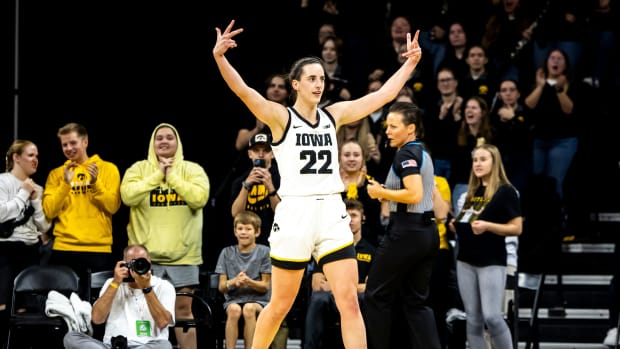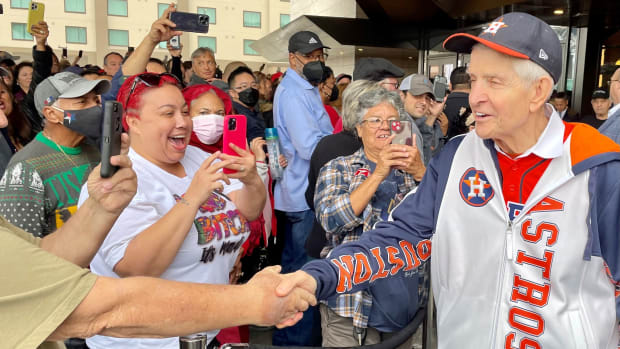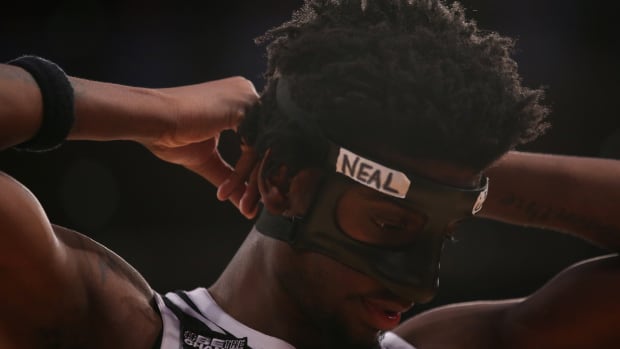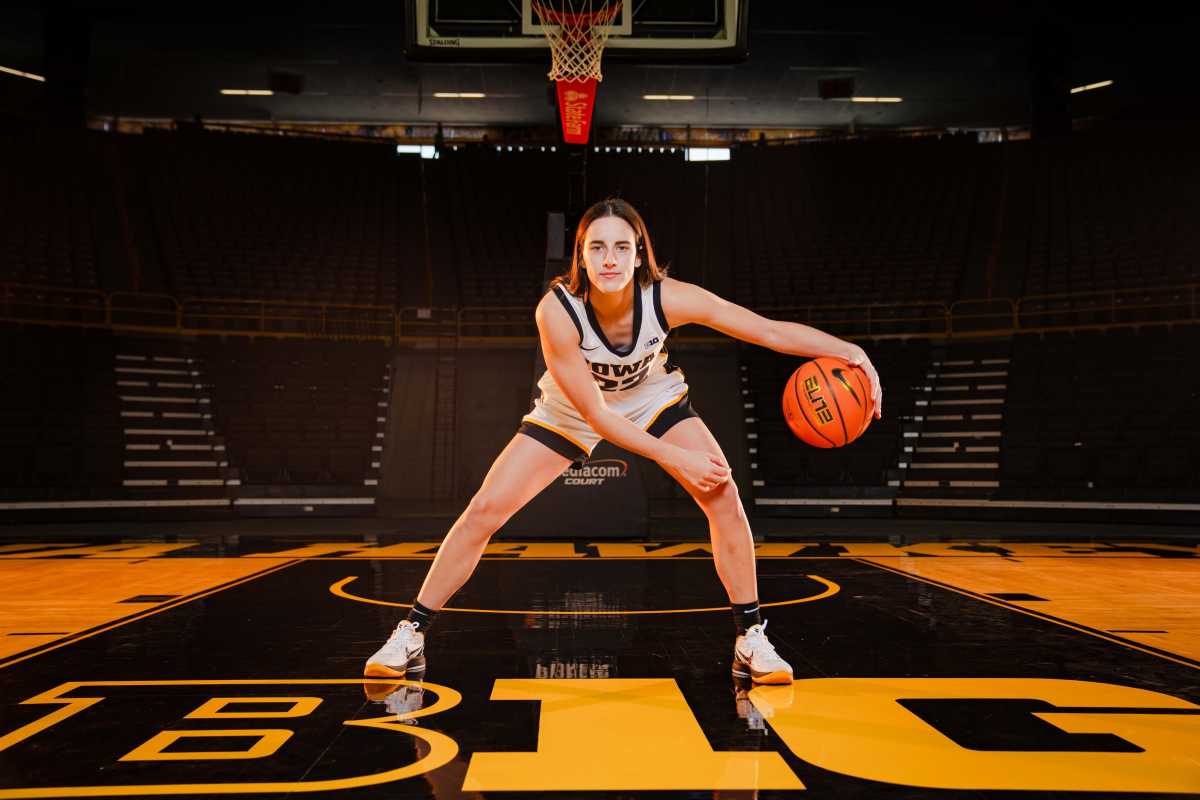
Caitlin Clark ‘NIL Paycut’ Misinformation Highlights WNBA Shortcomings
For the last year Caitlin Clark has been a media darling. Signing NIL deals with major national brands like Nike, State Farm, and Gatorade, Clark’s endorsement power rivals many of the most elite professional athletes, regardless of gender. With ever-increasing stardom and subsequent lucrative brand marketing opportunities, On3 reports that Clark has a total annual NIL valuation of $3.1 million, which, considering her transcendence beyond game of basketball, makes this estimation feel conservative.
Within the past two weeks, Clark has dominated headlines with multiple record-breaking performances and a declaration for this year’s upcoming WNBA draft where she is projected to be taken as the number one overall pick to the Indiana Fever. The news of her departure from collegiate basketball has led to the dismay of many Hawkeye fans and the elation of those in the state of Indiana. Those in Iowa City had hopes that she would elect to utilize her final year of eligibility to remain in college and further the gap between her and former all-time scoring champ Kelsey Plum.
In the wake of her draft announcement, many commentators took to social media to criticize her decision, insisting that by taking her talents to the WNBA, she would effectively be taking a pay cut. X, even community noted Darren Rovell who incorrectly attributed Clark's NIL earnings as a salary.
This is factually untrue, as Caitlin Clark has received no money for her on court performance, only NIL compensation in the form of endorsement contracts. Caitlin Clark’s NIL compensation has been conflated with the ‘pay-for-play’ NIL deals used by NIL collectives to lure talented men’s revenue athletes to specific schools. This modality of NIL uses token endorsement contracts as a loophole to provide athletes compensation for on-field play, essential serving as a proxy payroll —predominantly for football and men’s basketball programs.
Clark has not received any compensation from a collective in a ‘pay-for-play’ system. Confusing these two very distinct types of NIL does a disservice to the endorsement portfolio that Clark has been able to capture through bona-fide brand deals that utilize her as an influencer, not as an inducement to remain at Iowa. When moving to the professional level Clark will keep her endorsement portfolio, however, at the pro level it is not called NIL, but rather sponsorships, even though in practice they are the same. Barring something unforeseeable, Clark will maintain, and very likely grow, her current endorsement earnings, and, for the first time, will receive a salary for her play on the court.
However, a more nuanced discussion is able to be had about the popularity of collegiate women’s basketball in comparison to the WNBA. It is a valid argument that for most women, not named Caitlin Clark, their earning potential from endorsement deals is greater in college than the pros. However, calling the transition from college basketball to the WNBA a 'pay-cut' is often disingenuous and seeks to subterfuge the viability and growth of professional women’s athletics.
It is true for Clark, alongside other notable 2024 WNBA draft class entrants, like Paige Bueckers, Cameron Brink, and Angel Reese that their endorsement earnings will far surpass the rookie salary given to first-year WNBA players. As rookies these players will make anywhere between $64,000 and $77,000 base salary depending on draft position, dwarfing the million-dollar figures that they are able to bring in off of current NIL earnings and future professional endorsement deals.
When women’s basketball players bona-fide NIL deals are misconstrued with the ‘pay-for-play’ salaries given to their collegiate men counterparts, quickly it can seem that they would indeed take a massive salary reduction. But the deals that these women have are not salaries, they are endorsements which will extend beyond their collegiate days.
The WNBA is facing a big issue. The collegiate game is outpacing the professional game by a long-shot. Last weekend during Clark’s record breaking performance, viewership for the game surpassed any men’s college or NBA game that weekend. This is not isolated. According to Fox broadcasting data, more people are tuning in to women's college basketball than men's.
Last year's WNBA finals average a viewership of 728,000 falling well short of the viewership of this year's regular season women's college games on Fox. Last year's women's March Madness final held a radically higher viewership of 9.9 million viewers.
Why, has the WNBA been unsuccessful in its growth as compared to its collegiate counterpart? Many may point to the crop of talented women in the collegiate game today and say that they are a more dynamic and entertaining product. That outlook is shortsighted. The WNBA has been full of legendary players and personalities to the likes of Sue Bird, Candace Parker, Kelsey Plum, Breanna Stewart and many many more, but has never been able to captivate audiences like the college game. To think Clark's entry into the league will be enough to revitalize the league is a pipe dream for the WNBA. The Indiana Fever will assuredly see a tangible uptick in attention, but as talented as Caitlin Clark is, to think she will have significant impact on the league as a whole is still a weighty task — I would love to be proved wrong.
So, what is the reason that the NCAA is able to better spotlight its talent than the WNBA — put bluntly, the WNBA has an identity problem that college basketball does not. For valid reasons, WNBA franchises chose to have independent identities from NBA teams. The Knicks, Pacers, and Suns have developed deeply rooted brands that have integrated themselves into the very fabric of their respective cities in ways that the Liberty, Fever, and Mercury have been unable to accomplish. The lack of brand recognition and cultural integration within their respective markets causes the WNBA to suffer in fan engagement.
Women's college teams have been able to exploit the iconography and legacy of the their universities athletic department as a whole to tap into the tribalism of their schools fanbase. Playing under the same logo as teams who have traditionally held vast media attention and built strong brand value has allowed seamless transition of football and men's basketball fans into the women's college game.
The WNBA would have likely benefited from employing a similar tactic to leverage historic brands, but the ship has sailed. With most teams hailing from large metropolitan areas, the WNBA once again has trouble breaking into saturated markets in ways that most collegiate programs do not have to deal with. Often times at the biggest universities, college sports are the only show in town.
With elevated stardom at the college level and a bigger presence in their smaller markets, it is reasonable to assume that brands place a higher dollar value on collegiate women's basketball players. For players who do not hold the same level of fame as the top WNBA prospects, moving to the large metropolitan markets that WNBA teams occupy could very well reduce the value of their endorsement portfolios. At the professional level, WNBA players find competition for endorsements from players on other professional franchises and an overall decrease in league attention as evidenced by low viewership metrics.
Compared to men's sports this is counter-intuitive as no collegiate sport, outside of lacrosse, draws higher media attention than their respective professional league.
Until the WNBA is able to find methods to better establish their brands, some of their players may lose a bit of value in what they can command from an endorsement earnings at the professional level. Is this a 'pay-cut', no, not at least in the way it is being thrown around in current discourse. Caitlin Clark may very well save the Indiana Fever, but banking on her to save the WNBA may be a task too tall even for the scoring champ.

